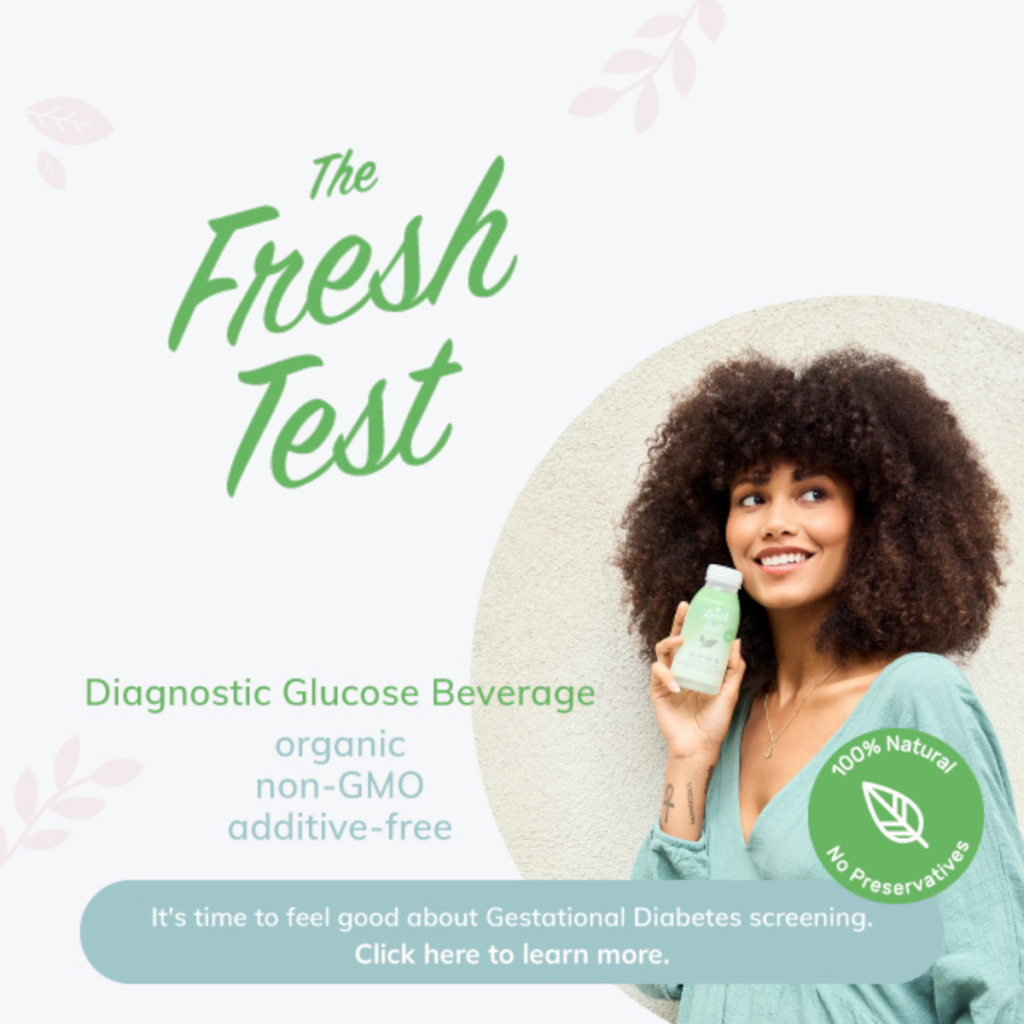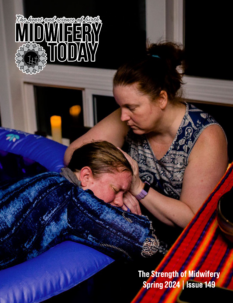
Photo by hessam nabavi
Two Particularities of the Human Placenta
Midwifery Today, Issue 144, Winter 2022.
Join Midwifery Today Online Membership
We focus on two reasons why the human placenta is special. First, it is highly effective at transferring maternal antibodies toward the fetal bloodstream. Second, it is not eaten by the mother.
First Particularity
The human placenta is special because it is so effective at transferring the maternal antibodies (IgG) that fetal blood concentrations of IgG are roughly the same as maternal concentrations at 38 weeks of pregnancy and continue to increase thereafter: they can occasionally reach more than twice the maternal concentrations at the time of birth (Pitcher-Wilmott, Hindocha, and Wood1980; Garty et al. 1994).
The basic needs of newborn babies must be interpreted in the light of inter-species differences regarding placental structures and functions (Borghesi et al. 2014). Among most mammals, which have not received antibodies before being born, the priority is immediate access to colostrum. For them, the early colostrum is, strictly speaking, vital. Among humans, even if it is beneficial, it is not vital: for thousands of years, the main effect of perinatal beliefs and rituals has been, more often than not, to deprive the neonate of early colostrum.
In our species, the main questions are about the bacteriological environment in the birthing place, how diverse it is, and how familiar it is to the mother and, therefore, to the baby. Familiar microbes are friendly microbes. Today, we are in a position to understand that the millions of microorganisms that will be the first to “occupy the territory” will start programming the immune system. We must realize the importance of this topic, since it is about health development.
These considerations, inspired by immunology and bacteriology, are instrumental in evaluating the scale of the recent turning point in the history of human births. There are of course degrees in how the bacteriological environment is altered in the birthing place. Exposure to antibiotics and births by cesarean in the sterile environment of an operating room are extreme examples.
On the day when a paradigm shift will push us to consider human births from these new perspectives, it will be impossible to skip new questions about the future of dysregulations of the immune system, particularly the prevalence of pathological conditions such as allergic diseases, autoimmune diseases, and viral diseases. Until now, epidemiological studies inspired by these questions are exceptionally rare and had to overcome technical difficulties, at a time when homebirth is usually marginalized. It has been easier to contrast vaginal birth and caesarean birth inside the framework of conventional departments of obstetrics.
As a point of departure, we will need studies contrasting homebirths and hospital births. In practice, for multiple reasons, such studies are not feasible in wealthy countries, apart from the Netherlands. A Dutch birth cohort study involving more than 1000 children (born at a time when the rates of homebirths were above 25% in that country) included data on birth characteristics, lifestyle factors, and allergic manifestations collected through repeated questionnaires from birth until age seven years (van Nimwegen et al. 2011). Fecal samples were collected at age 1 month for bacteriological studies, and blood samples were collected at ages 1, 2, and 6 to 7 years to determine the levels of specific antibodies (IgE). Homebirth, compared with vaginal hospital birth, was associated with a low risk of allergic diseases and asthma. The differences were highly significant for children with allergic parents. Should we already claim that there are two kinds of births: birth at home and birth elsewhere?
We must take this opportunity to emphasize that a gigantic and highly developed brain is not the only organ that makes Homo different from other mammals. Until recently we had not realized how special the human placenta is. It is special even compared to other mammals, such as primates and rodents, which share a “hemochorial” placenta. The term “hemochorial” means that there is only one thin membrane between the maternal blood and the fetal blood. Among humans, this thin membrane includes highly active receptors for transfer of antibodies (IgG). Among most mammals there are several membranes separating maternal and fetal blood circulation. There are “epitheliochorial” placentas (horses and pigs), “synepitheliochorial” placentas (ruminants), and endotheliochorial placentas (carnivores). In species with several placental membranes, access to the early colostrum is the first opportunity for the neonate to receive maternal antibodies.
The importance of these considerations is easily understood in the age of the “microbiome revolution.” Today, it is commonplace to present Homo as an ecosystem with a symbiotic interaction between the trillions of cells that are the products of our genes (the “host”) and the hundreds of trillions of micro-organisms that colonise the body (the “microbiome”).
One can wonder why it took so long to realize the alignment of interest of the host and of the microbiome. While the host offers raw materials and shelter, hundreds of trillions of microorganisms feed and protect their host. It is as if since Pasteur’s era until recently there has been a deep-rooted cultural conditioning associating microbes and diseases and classifying all microbes as enemies. This cultural conditioning has not been seriously challenged as long as bacteriologists could only look at microscopes and cultivate microbes on Petri dishes. They started to dramatically enlarge their horizon when they became geneticists, exploring the world of microorganisms by using the power of computer processing and new DNA sequencing technologies: not all bacteria seen under the microscope can be cultured, since their growth conditions are unknown. Bacteriologists can now see the “unseen majority.”
It has been an important step in the history of sciences to realize that the body of each of us is colonized by more microorganisms than there are human beings on planet earth. This fact inspired new questions about the multiple vital functions of the microbiome and when and how it starts being established. Until recently, it was commonplace to claim that “to be born is to enter the world of microbes” (Odent 2004). Today we suddenly need to reconsider the premise of the “sterile womb”. Some researchers have suggested that there is a placental microbiome (Aagaard et al. 2014). An important point is that the placental microbiome profile might be akin to the maternal oral microbiome. This is an opportunity to underline that the “microbiome revolution” inspires questions that would have been considered futile until recently … such as the function of kissing (Kort, Caspers, and de Graff 2014).
For obvious reasons, the emergence of this new awareness will lead to the realisation that there is no substitute for homebirth. However, some simple adaptive attitudes are possible everywhere, such as being reluctant to expose fetuses and newborn babies to antibiotics. It is possible to give more importance to skin-to-skin contact immediately after birth, even in the case of a cesarean. It is also easy to wrap the baby in clothes recently worn by the mother and, occasionally, to put it in the arms of a person, such as the baby’s father, who is cohabiting with the mother.
It is probable that several kinds of strategies will be evaluated in the near future. For example, the positive effects of the use of probiotics in the perinatal period need to be confirmed (Kuitunen et al. 2009). Let us mention a pilot study in Puerto Rico of the ‘’gauze-in-the vagina technique’’ (Dominguez-Bello et al. 2016). A gauze pad is placed in the vagina in order to collect bacteria-laden secretions. Then, right after a caesarean birth, the neonate’s skin and mouth are swabbed. This technique is based on the assumption that human babies have been programmed for immediate colonisation by vaginal microorganisms. There are good reasons to challenge this assumption. It is highly probable that birth with intact membranes (“birth in the caul’’) was frequent before the socialisation of childbirth. It is still comparatively common among modern women who give birth in an environment compatible with a ‘’fetus ejection reflex’’ (Odent 2016). It is notable that a great variety of societies have made the concordant observations that human beings born within the caul (i.e., protected against vaginal microbes) will be healthy (and lucky).
To compensate for the effects of microbial deprivation in the neonatal period, I have suggested the use of “Bacille de Calmette et Guerin” (“BCG) (Odent 2016a; Odent 1999). As a way to provide non virulent microbes of the mycobacteria family, BCG is an immunomodulator previously used as a vaccine against tuberculosis and as a therapeutic agent for a great diversity of diseases. Theoretically, it should facilitate the kind of deviation of the immune system that is hindered in a more or less aseptic environment. It is the only infancy vaccine that has been evaluated through randomised controlled trials with long-term follow-up (in one study the follow-up was 60 years) (Aronson et al. 2004). It is notable that the nonspecific long-term effects on health always appeared as positive. Trials with follow-up periods of less than 10 years would easily evaluate the prevalence of some of the dysregulations of the immune system that have become more frequent during the past decades.
There will probably be a time when it is impossible to ignore the bacteriologic and immunologic perspectives when addressing the issue of homebirth versus birth elsewhere.
An effect of such an historical turning point should be to “de-marginalize” homebirth and therefore to make it safer. It should be to raise questions about how to adapt homebirth to the dominant urbanised lifestyle. Can a new awareness create such situations that hospital staff will be at the service of an increased number of women who prefer to keep the option of homebirth open? The prerequisite will be to overcome our deep-rooted cultural conditioning and to get out of the “helping-guiding-controlling-supporting-coaching-managing paradigm.” It will be to understand the concept of “protection of an involuntary process,” usually inhibited by neocortical activity.
Second particularity
It is also considered intriguing that, apparently, eating the placenta has never been instinctive in our species. If “placentophagy” had been a common behavior at any time in the history of humanity, we should find hints of this behavior in myths, legends, and reports from preliterate and preagricultural societies. I know of women who had reached a very instinctive state of consciousness in the perinatal period, behaving as if “on another planet,” and overcoming a great part of their cultural conditioning. Yet none of them had ever expressed a tendency to bring the placenta toward their mouth. Modern women who occasionally have eaten pieces of placenta were inspired by theories, such as the theory that it might prevent postnatal depression. Scientific interest in the placenta has recently inspired such theories leading to a form of human placentophagy based on rational considerations. For example, the discovery by Kristal of a placental substance that makes endorphins more effective (‘placental opioid-enhancing factor’) could be seen as a justification for placentophagy in our species. However, we should avoid the conclusion that eating placenta is an innate human behavior.
Exploring placentophagy is important since all land mammals eat the placenta. If eating the placenta has never been instinctive among our ancestors, this would be another common point with sea mammals, including cetaceans and seals. Interestingly, from this regard, camels are the exceptions among land mammals: they never eat the placenta. Let us take this opportunity to mention that camels have another particularity among land mammals: like Homo and sea mammals they have kidneys with multiple “pyramids” (Williams 2009). Since camels consume highly salty plants and drink the water of salty ponds after giving birth, and since sea mammals also have easy access to hypertonic salty substances, one can suggest that placentophagy and special kidney structures might be correlated with the urgent need in specific nutrients, particularly minerals, in the period following birth. It is as if placentophagy and the usual kidney structures were features shared by mammals that do not have access to hypertonic salty substances after giving birth. Can camels from the desert help us to understand our common points with sea mammals?
References:
- Aronson, NE, et al. 2004. “Long-term Efficacy of BCG Vaccine in American Indians and Alaska Natives.” JAMA 291(17): 2086–91. doi:10.1001/jama.291.17.2086.
- Borghesi, J, et al. 2014. “Immunoglobulin Transport during Gestation in Domestic Animals and Humans—A Review.” Open J Animal Sci 4: 323–36.
- Dominguez-Bello, MG, et al. 2016. “Partial restoration of the microbiota of cesarean-born infants via vaginal microbial transfer.” Nat Med 22(3): 250–53. doi: 10.1038/nm.4039.
- Garty BZ, et al. 1994. “Placental transfer of immunoglobulin G subclasses.” Clin Diagn Lab Immunol 1(6): 667–69.
- Kort, R, M Caspers, and A de Graaf. 2014. “Shaping the oral microbiota through intimate kissing.” Microbiome. 2014.
- Kuitunen, M, et al. 2009. “Probiotics prevent IgE-associated allergy until age 5 years in cesarean-delivered children but not in the total cohort.” J Allergy Clin Immunol 123(2): 33.
- Odent, Michel. 2004. “Entering the world of microbes.” In: The Caesarean. London: Free Association Books. Pp. 58–61.
- Odent, M. 2016. “The fetus ejection reflex.” Birth 14: 104–05
- Odent, M. 2016a. “The future of neonatal BCG.” Medical hypotheses 91: 34–36.
- Odent, M. 1999. “Future of BCG.” Lancet 354: 2170.
- Pitcher-Wilmott, RW, P Hindocha, and CB Wood.1980. “The placental transfer of IgG subclasses in human pregnancy.” Clin Exp Immunol 41(2): 303–08.
- van Nimwegen,FA, et al. 2011. “Mode and place of delivery, gastrointestinal microbiota, and their influence on asthma and atopy.” J Allergy Clin Immunol 128(5): 948–55.e1–3.
- Williams, Marcel Francis. 2009. “Marine adaptations in human kidneys.” In: Was Man more aquatic in the past? Verhaegen, Kuliukas, and Vaneeechoutte, eds. Chapter 8. Bentham Science.

 Michel Odent, MD, has been in charge of the surgical unit and the maternity unit at the Pithiviers (France) state hospital (1962–1985) and is the founder of the
Michel Odent, MD, has been in charge of the surgical unit and the maternity unit at the Pithiviers (France) state hospital (1962–1985) and is the founder of the 
















